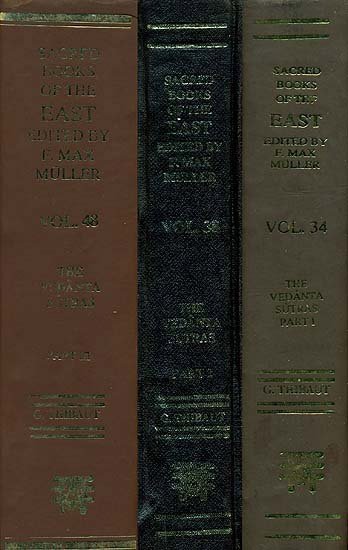Brahma Sutras (Ramanuja)
by George Thibaut | 1904 | 275,953 words | ISBN-10: 8120801350 | ISBN-13: 9788120801356
The English translation of the Brahma Sutras (also, Vedanta Sutras) with commentary by Ramanuja (known as the Sri Bhasya). The Brahmasutra expounds the essential philosophy of the Upanishads which, primarily revolving around the knowledge of Brahman and Atman, represents the foundation of Vedanta. Ramanjua’s interpretation of these sutras from a V...
Sutra 3.2.27
27. Or else like light and its abode, both being fire.
The or sets aside the other two alternatives. If Brahman itself only appeared in the form of non-sentient things—as the snake itself only constitutes the coils—both sets of texts, those which declare difference as well as those which declare the unchangeableness of Brahman, would be contrary to sense. We therefore, adopting the second alternative, hold that the case under discussion is analogous to that of light and that in which it abides, i.e. the luminous body. The two are different, but at the same time they are identical in so far as they both are fire (tejas). In the same way the non-sentient world constitutes the form of Brahman.
